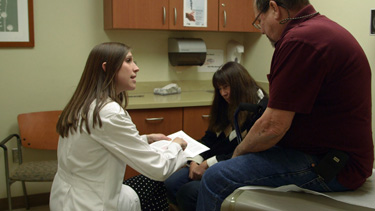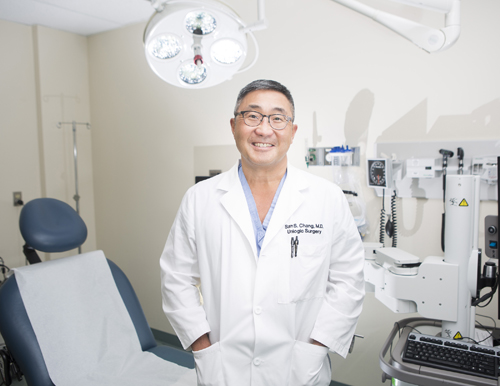Vanderbilt-Ingram Cancer Center (VICC) patient William Ostman smiled while gazing into a camera lens and declared, “I am a prostate cancer survivor.”
Ostman, 63, who now lives in Hermitage, Tennessee, was sharing his story recently in a video for the nonprofit organization ZERO – The End of Prostate Cancer.
The fact that he is still here to promote prostate cancer awareness more than eight years after his diagnosis is a direct result of new therapies for patients with advanced disease.

The prostate is a gland located just below the bladder in men. In 2014, the National Cancer Institute estimated 233,000 new cases of prostate cancer with 29,480 deaths.
Ostman’s cancer was detected through a routine blood test that showed an elevated prostate-specific antigen (PSA) level.
He had surgery to remove the prostate, followed by external beam radiation a few months later.
“The next five years I still worked, I had no symptoms,” Ostman said.
But over time the cancer spread to his back and bones, eventually putting him in a wheelchair.
“Ten years ago, there were almost no therapies for men with metastatic disease,” said Alicia Morgans, M.D., assistant professor of Medicine.
Chemotherapy had just been approved for men with advanced disease but it gave patients only about three extra months of life.
According to Morgans, in the past five years five new therapies have been approved by the Food and Drug Administration (FDA) and each therapy attacks the disease in a different way.
“Mr. Ostman is a perfect example of someone who had advanced disease for many years and who, fortuitously, has had new treatments approved at each point where he has needed to change therapies,” explained Morgans.
Many of the new therapies are oral medications or are given by IV infusion every few weeks. Since most prostate cancer is fueled by the male hormone testosterone, some of the drugs target testosterone either by stopping production or disrupting the action of the hormone.
“Over time almost all of those cancers will become resistant to these therapies, and that’s when we add new treatments,” said Morgans.
Prostate cancer really likes to go to the bones and the lymph nodes, said Eric Shinohara, M.D., MSCI, associate medical director of Radiation Oncology.
“It can weaken a bone, meaning there is an increased risk of fracture and it can cause a lot of pain. If the cancer is in a vital bone like the spine, it can grow into the spinal cord and cause paralysis.”
With external beam radiation a focused beam is aimed at those problem areas “…like spot welding,” according to Shinohara.
A newly approved form of radiotherapy injected into the patient also targets cancer in the bone.
“Radium on the periodic table is in the same column as calcium, so your body thinks of it as calcium and puts it in bone. In patients with diffuse bony disease we use radium. It goes to the bones and limits dose to other normal tissues. It is a very powerful tool because we can control where the dose goes and treat multiple areas of disease effectively,” said Shinohara.
Today, Ostman is back on his feet, though he still uses a cane. With the help of his wife, Liz, he is able to navigate steps and spends time in his workshop.
So far the new therapies do not cure advanced prostate cancer, but Ostman is grateful the treatments are making his disease manageable.
“Luckily I haven’t had any bad side effects with any of them. I am slowly, very slowly getting better. If anything hurts, all I have to do is check with Dr. Morgans and …we’ll move on to something else.”
Some men still have very aggressive disease that pushes through all available treatments and is fatal, but for other patients the new therapies help manage the disease more like a chronic illness.
“They don’t need to suffer terribly just because they have advanced disease. There is hope that they can maintain quality of life and certainly live longer,” said Morgans.















